Quick Answer
A safety razor uses a single blade and minimal pressure, while a cartridge razor uses multiple blades pressed against the skin. Safety razors typically cause less irritation, cost less over time, and offer more control. Cartridge razors are faster to learn but often increase irritation and ingrown hairs.
Safety Razor vs Cartridge Razor at a Glance
| Feature | Safety Razor | Cartridge Razor |
|---|---|---|
| Number of blades | One | Typically three to five |
| Pressure required | Very light | Moderate |
| Risk of irritation | Lower | Higher |
| Cost over time | Lower | Higher |
| Learning curve | Moderate | Low |
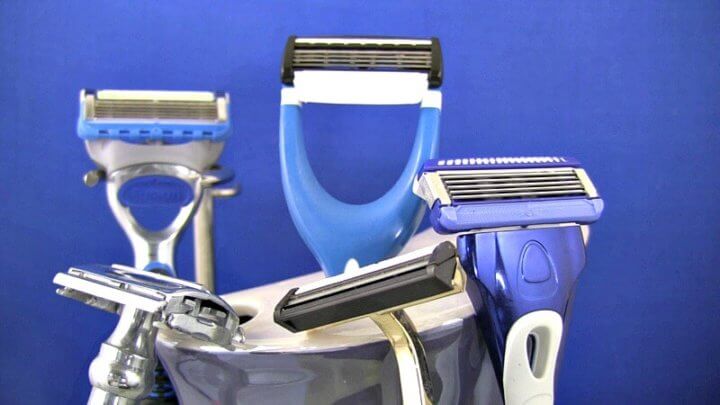
Are you looking for a close shave without spending a lot of money? If so, you may be wondering if a safety razor or cartridge razor is the best option. In this article, I’ll compare safety razors and cartridge razors to help you decide which one is right for you.
Safety Razor vs Cartridge Razor: Key Takeaways (Especially For The Beginner)
- Safety razors and cartridge razors both have the ability to safely shave the skin. Both types of razors use blades to cut hair, and thus there is a risk of injury if they are used incorrectly. Additionally, both types of razors can cause irritation or razor burn if they are not used with care or after shaving products have been applied.
- The main difference between safety razor vs cartridge razor is in the price per blade. Safety razor blades are far less expensive than those of a cartridge razor, making them more economical overall.
- Safety razors have a lower long-term cost, require less maintenance, have more blade choices (providing different levels of comfort and performance depending on your skin type or hair type), are more environmentally-friendly, and can provide a closer shave with less irritation when used properly. Furthermore, safety razors can turn your generic shaving routine into an enjoyable morning ritual when paired with shaving soap or cream.
- Cartridge razors are more convenient, require less skill to use, have a lower up-front cost, and are more readily available. Cartridge razors are also somewhat less fussy than safety razors since they’re relatively homogeneous across brands/models.
- Ultimately, the decision lies with the individual consumer and their preferences and budget.
Safety Razor vs Cartridge Razor – Advantages And Disadvantages
Here is a more detailed breakdown of the Safety Razor vs Cartridge Razor discussion:
Disposable Blades
Safety razor blades and cartridge razor blades both have their advantages. Safety razors rely on a single blade while cartridge razors have multiple blades that allow the razor to lift-and-cut hair with every stroke (known in the razor industry as the “hysteresis effect”). Most cartridges also feature a built-in lubricating strip to reduce irritation and a “pretensioner” to flatten the skin prior to being cut.
A Major between these two systems is convenience: safety razor blades require a little more effort on the user’s part, as changing out the blades takes a bit more time than a cartridge system.
Safety razors have a universal design so you can use different brands of blades, whereas cartridge razors have a proprietary fitting that only works with their brand.
Razor Handle (Plastic vs. Metal?)
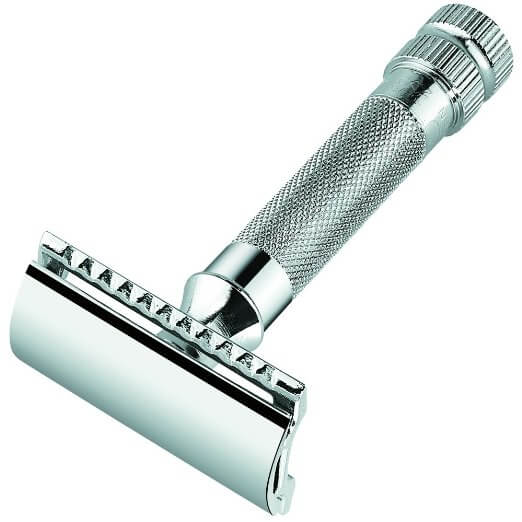
The handles of both types of razors are designed to provide control while shaving. Safety razors commonly have a 100% metal body with a knurled etching along the handle that makes it easier to grip, while cartridge razors typically have a blend of materials such as plastic and rubber that provides added comfort when holding onto the razor.
Safety razors generally offer more control due to their metal body design, whereas cartridge razors may be a little easier to hold onto even if your hands are wet or coated in shaving cream due to their blend of materials.
Cost Comparison
The cost of using a safety razor is lower than that of a cartridge razor over the long-term. Safety razor handles are more expensive than cartridge razors “up front” but their useful life is much longer and you can also sell your safety razors in the future if you choose to collect them as a hobby or no longer need them.
Periodically replacing blade cartridges is more costly than replacing safety razor blades: US $3-4 for the typical cartridge (lower in bulk) vs. about $0.50 for a safety razor blade (again, lower in bulk).
Blade Angle
When comparing safety razor and cartridge razor, the blade angle is an important factor to consider. With cartridge razors, the blades have been specifically placed at an angle specified by the manufacturer for maximum efficiency, or minimal risk of cuts, or something in-between.
With safety razors, however, it is up to the user to determine the blade angle. This makes shaving specific “terrain” much more flexible by offering a range of cutting angles but can lead to more mistakes and potential irritation if not done correctly.
Despite this difference in blade angles between the two types of razors, I think mastering classical wet shaving with a safety razor has clear advantages over using a cartridge razor due to its requirement for skillful technique when shaving compared with how simple it is use a cartridge razor with a pivoting head that automatically positions blade edges against skin correctly.
Aggressiveness
The “aggressiveness” of a razor can be compared in that both systems are capable of providing a smooth shave given a specific razor model’s design and engineering. There are “mild” safety razors and “aggressive” safety razors; and there are “mild” cartridge razors and “aggressive” cartridge razors.
Very broadly-speaking I think cartridge razors are generally “milder” than safety razors from the perspective of blade angle. But other factors, such as the number of blades, can make a cartridge razor “feel” more aggressive.
Learning Curve – Shave Experience And Performance

Safety razors are more traditional and requires a longer learning curve to to get the hang of, while cartridge razors are quicker and easier to use.
Both systems offer an excellent shaving experience, with the safety razor offering a more traditional and slower experience (often using additional “old school” tools like a shave brush), while the cartridge razor can be used more efficiently and quickly.
The safety razor is better suited for those who want to take their time (perhaps making more than one pass on the skin) to get a smooth shave, while the cartridge razor offers quick results (particularly if the shaver is in a rush) with less skill required.
Additionally, safety razors allow users to adjust the pressure applied during shaving which allows them more control over how close they get to their skin’s surface layers. Cartridge razors do not offer this same level of customization since they typically come with one setting that does not allow for any variation in pressure applied during shaving sessions (due to the razor’s pivot).
Skin Irritation Or Razor Burn

Both types of razors both have the potential to cause skin irritation. The main difference is that safety razors are designed with fewer blades, which reduces the risk of clogging and provides a closer shave without irritating the skin.
The number of blades in cartridge razors makes them more likely to become clogged with hair or dead cells which can lead to an uneven shave and skin irritation. Safety razor designs have fewer blades, making them less likely to cause this problem.
Razor Bumps
Both types of razors can cause razor bumps. Safety razor bumps may be less common due to the fact that safety razors don’t cut as deep as cartridge razors.
The main difference between the two types of razor bumps is that cartridge razor bumps are usually caused by hair being cut down to below skin level, while safety razor bumps may be caused by hair curling and growing inwards after being cut by a safety blade.
Blade Disposal And Environmental Impacts
Safety razor blades are made out of stainless steel, which means they can be more easily recycled through community recycling programs. Many safety razor blades even come in easily recycled paper-based packaging instead of plastic packaging like cartridge razors.
Cartridge razors are made of a mixture of plastic and metal which makes them more difficult to recycle. There needs to be a process to separate the two materials, and most local recycling plants aren’t equipped to do this. This means that most razor cartridges end up in landfills and their materials go to waste. However Gillette does offer a recycling program for their cartridges, Terracycle.
Razor Head Pivot
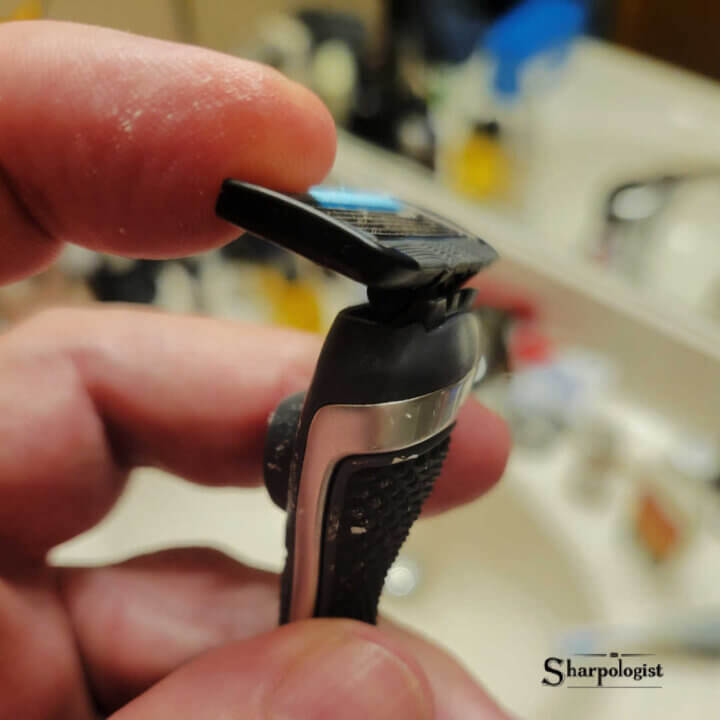
One main difference between the safety razor head and cartridge razor is that the cartridge razor has a pivoting head, which allows the blades to interact with your skin at the angle required, without any technicality. Most safety razors have a fixed head that does not pivot.
Lubricating Strip
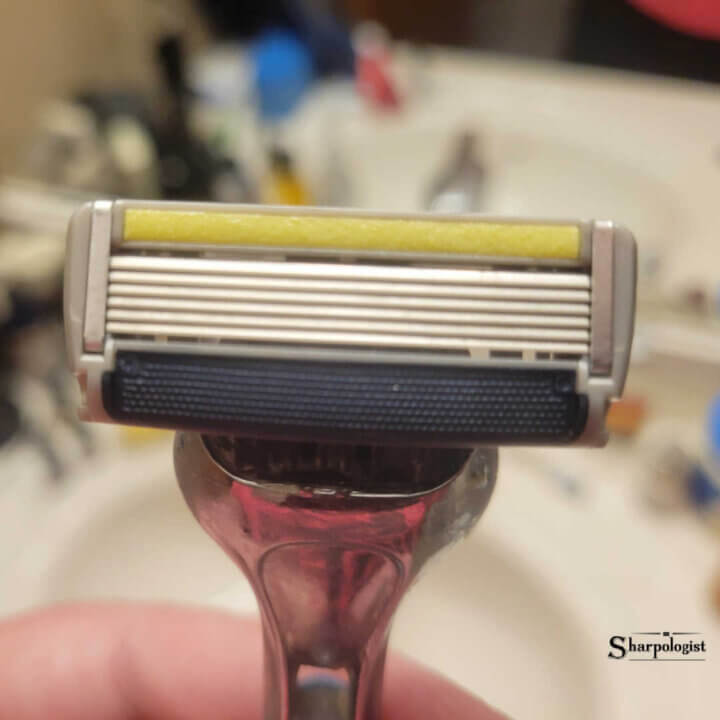
The lubricating strip is a feature found in cartridge razors that reduces friction between the blades and the skin. It consists of a layer of lubricating liquid, such as aloe vera, that is applied to the top or bottom (or both) of the cartridge blade before use. This helps reduce the amount of friction between the razor and your skin, reducing chances for irritation or razor burn.
Safety razor users do not have this feature (though there are “self lubricating” DE razors). Instead, they need to use a good shaving cream or soap which acts as a lubricant during shaving. Therefore, safety razor users may be more likely to experience more friction than those who use cartridge razors with built-in lubricating strips, increasing their chances for irritation or other problems associated with excessive friction, all other things being equal.
However this is by no means a “settled” issue, as there hasn’t been a whole lot of objective, peer-reviewed research.
Pressure
When it comes to cartridge razors vs safety razors, there are a few differences in terms of pressure. Safety razor shavers should use lighter pressure as the head does not move, whereas cartridge razor shavers need to apply more pressure since the pivoting head ensures that the blades are positioned correctly against the face.
The increased required pressure for cartridge razor shaving is due to its pivoting head which allows for more accurate positioning of the blades against the face. On the other hand, lighter pressure is needed when using a safety razor because its head does not move and therefore requires more awareness of blade angle during each stroke.
The Razor “System”
One key difference between safety razor maintenance and cartridge razor maintenance is that safety razor blades can be replaced when needed at lower cost than replacing an entire cartridge unit (although there are still costs associated with replacing blades).
Cartridge razor users generally need to purchase a new unit when their current one no longer works well for them due to lack of replacement parts availability or high costs associated with repair services if available at all in some regions/countries/locations etc..
Razor Companies
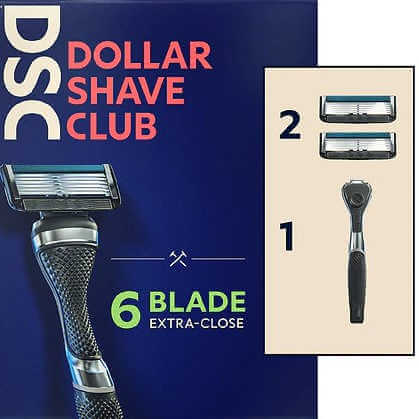
A major reason for the popularity of cartridge razors has been largely due to the extensive marketing campaigns by major razor companies since the 1970s.
Safety razors have seen an increase in popularity in recent years due to advancements in shaving practices as well as increasing prices of cartridge replacements. However, while safety razors are still offered by some large corporations (e.g. Gillette) they remain a “niche’” market.
What Is A Safety Razor?
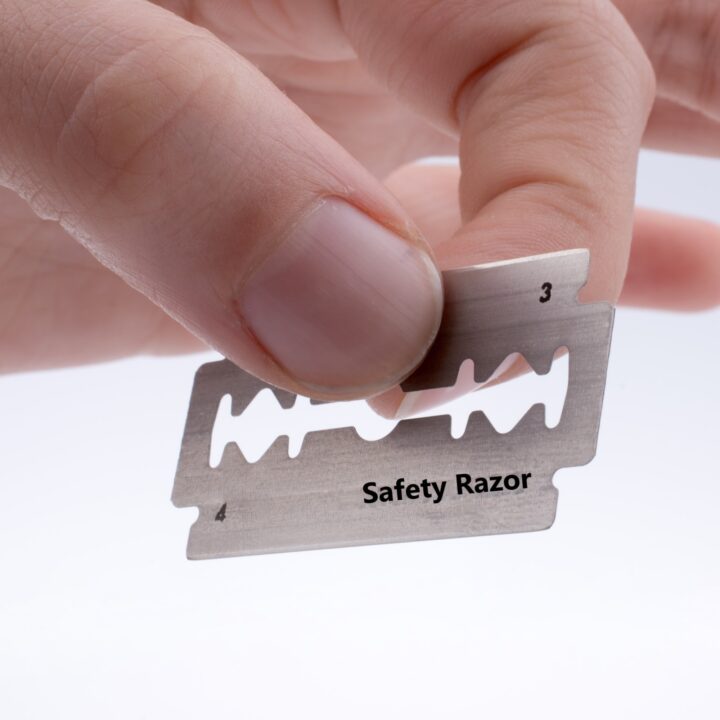
Broadly there are two basic versions of the safety razor, single edge (SE) and double edge (DE).
SE razors have one non-proprietary blade with one sharp edge. Double edge razors have one non-proprietary blade with two sharp edges.
SE razor blades have a few different form factors: Injector, GEM, and and FHS (these names are taken from the original brands they were associated with).
The original SE razor models are long-gone but their legacy lives on with other manufacturers, including Supply, Parker, and Oneblade.
Double edge razors have a number of head designs but all use the same type of blade:
DE razors are typically use a single, non-proprietary blade with two sharp edges (one on each side) constructed in one of three ways:
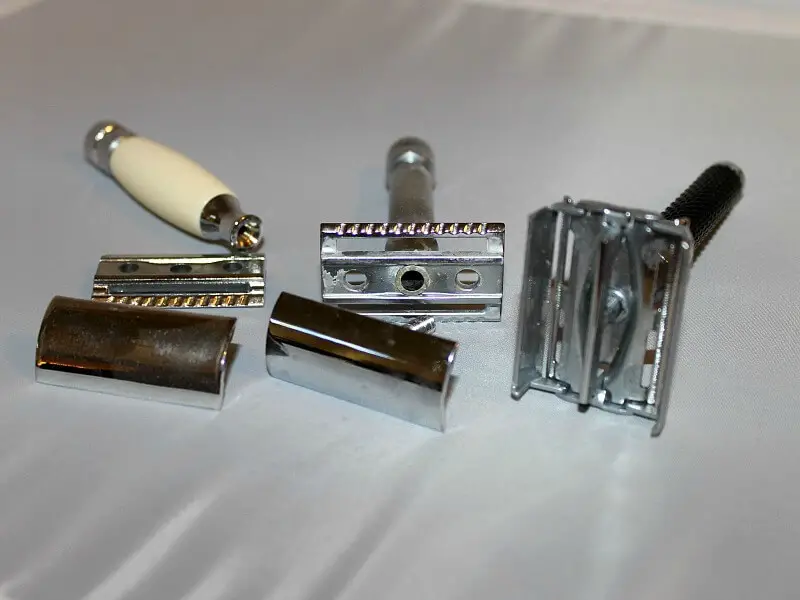
- A three piece razor is the oldest (and easiest to manufacture) type, consisting of a handle, a base plate, and a head or cap.
- A two piece razor has the base plate permanently mounted to the handle.
- A one piece “twist to open” (TTO) or “butterfly” safety razor was the type most common just before the ascent of modern cartridge razors: the Gillette Super Speed is the classic TTO.
(SE razors are almost entirely one-piece designs.)
The vast majority of razors have a set gap space: the distance between the razor blade’s edge and the razor’s skin safety bar. The amount of the gap distance is determined by the manufacturer for a particular model of razor. Generally, razors with a smaller gap are better for beginners or those with sensitive skin.
However there are also adjustable safety razors that can change the gap to make them more gentle or more aggressive.
A variation of the adjustable razor design is the use of multiple base plates. These razors are not “adjustable” in the normal, continuously-adjustable sense, but rather they offer different base plates: each plate has a different amount of blade exposure set.
There are also slant bar razors. What is a slant razor? Think of it like a mini-guillotine for stubble. Held at an asymmetrical blade exposure by design, the slant is meant to offer a more efficient cutting angle for a DE blade which can give a closer shave more quickly.
What Is A Cartridge Razor?
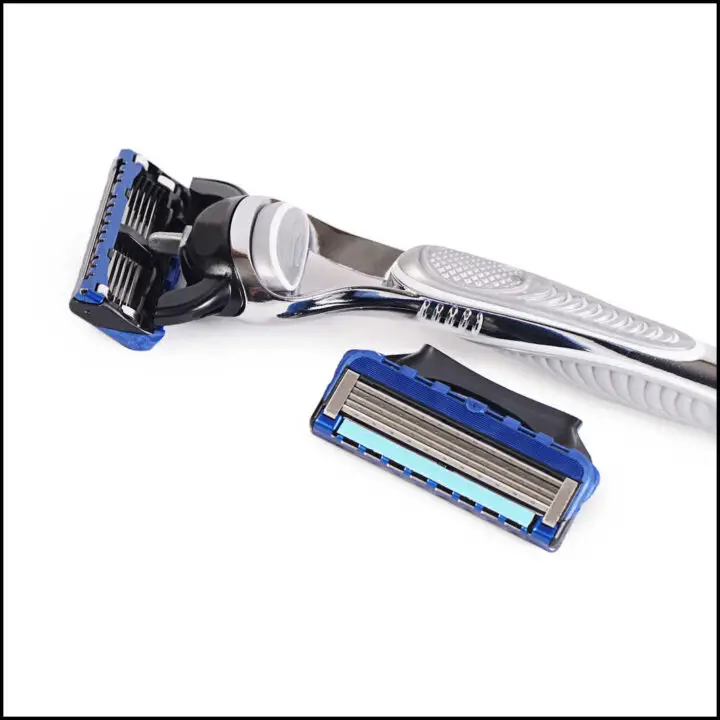
A cartridge razor is a razor where multiple blade edges are contained in a head “cartridge” that can be detached from the handle and discarded when it becomes worn.
The design of this type of razor keeps the razor blades at a set angle, making them easier and convenient to use. When they become dull, they can be easily replaced with a new head. The handle remains intact and can be used with multiple cartridges over time (though cartridges between manufacturers are not compatible with each other).
Related Post: The Best Cartridge Razor For Your Needs
Types Of Cartridge Razors
There are fewer variations of cartridge razor designs. The most obvious variation is the number of blades in the cartridge. They can range from two to seven. The shaving blade cartridges are similar but they often have different head-to-handle mounting schemes that make the razors a “walled garden” to a particular manufacturer. There are a few differences, though:
A precision edging blade is sometimes included on cartridge razors with four or more blades. An edging blade is mounted on the top or back of the cartridge for “detail” work like cutting sideburns or getting into tight places like under the nose.
A lubrication strip above or below (or both!) the cartridge may provide additional lubrication or protection to the skin.
A pivot to let the cartridge blade edges follow curves of the skin “automatically” and to also provide some compensation for putting too much pressure on the razor.
Safety Razor vs Cartridge – Definitions And Debate
There is a bit of confusion about just what is a safety razor. Wikipedia says:
“A safety razor is a shaving implement with a protective device positioned between the edge of the blade and the skin.”
Wikipedia (and others) consider pretty much any non-electric razor that has a skin guard between the blade(s) and the skin as a “safety razor”–including razors that have replaceable cartridges and those that are fully disposable.
But “the conventional wisdom”–and what I will use for this article–generally considers a “safety razor” as a razor that uses a single blade (with one or two edges) and some kind of skin guard on a non-proprietary, stationary (though that is changing!) razor head.
For the purposes of this article a cartridge razor is a razor where multiple blade edges are contained in a head “cartridge” that can be detached from the handle and discarded when it becomes worn. It also includes multi-blade razors that are fully disposable (the head and handle do not separate).
A Brief History
The modern safety razor as we know it today was developed in the late 19th century.
The first patent for a safety razor was issued to Frederick Kampfe in 1880. His design featured a removable blade that could be replaced when it became dull. This was a significant improvement over the straight razors that were commonly used at the time, which required honing and stropping to maintain their sharpness.
In 1901, King C. Gillette developed a new design for a safety razor that featured a thin, disposable blade that could be easily replaced. This design became very popular and is still in use today.

The “razor and blades business model,” famously employed by the Gillette Company for their razors and blades, refers to the practice of selling a product (the razor) at a low price and making up for it by charging a higher price for consumable parts (the blades) that are needed to use the product.
Under this model, the initial cost of the razor is kept low in order to make it more affordable and accessible to consumers. The company then makes a profit by selling the blades, which are consumable and need to be regularly replaced in order to continue using the razor.
The Gillette Trac II, introduced in 1972, was the first cartridge razor in the “modern” sense. Prior to the Trac II, most razors used a single, disposable blade that had to be manually replaced. The Trac II was revolutionary at the time because it used a cartridge that contained multiple blades that could be easily swapped out when they became dull. The cartridge system made it easier and more convenient for people to change the blade on their razor, and it quickly became popular.
The Trac II was also the first razor to use the “hysteresis” concept (e.g. “lift and cut”).
FAQ
What is the difference between a safety razor and a cartridge razor?
Safety razors and cartridge razors both provide a way to shave. Both types of razors have blades that cut the hair, but the main difference is that most safety razors have a fixed head while most cartridge razors have a pivoting head. Additionally, cartridge razors typically have built-in features such as lubricating strips and combs, while safety razors do not.
What are the misconceptions of a safety razor?
There are a few misconceptions that people may have about using a safety razor:
- They are difficult to use: Some people may think that double edge safety razors are difficult to use because they require more skill and precision compared to cartridge razors. However, with a little practice, anyone can learn to use a double edge safety razor effectively.
- They are more dangerous: Double edge safety razors are often perceived as being more dangerous than cartridge razors because the blade is exposed. However, if used properly, a double edge safety razor is actually safer than a cartridge razor because it is less likely to cause nicks and cuts due to the way it is designed.
- They are not as effective: Some people may believe that double edge safety razors are not as effective at providing a close shave as cartridge razors. However, this is not necessarily true. Double edge safety razors can provide a close and comfortable shave when used correctly.
- They are more expensive: While it is true that the initial cost of purchasing a double edge safety razor may be higher than a cartridge razor, they are more cost-effective in the long run because the blades are much cheaper to replace.
Is a safety razor better than a cartridge?
Ultimately, it’s a matter of personal preference and what you are looking for in a razor. Some people prefer the convenience and ease of use of cartridge razors, while others prefer the closer shave and lower cost of safety razors.
Is it worth switching to a safety razor?
Safety razors can be less expensive in the long run than cartridge razors, but may require more skill and practice to use. If you are looking to save money on your shaving supplies, a safety razor may be a good option as the blades are cheaper and last longer.
If you are comfortable using a cartridge razor and are willing to invest the time and effort to learn how to use a safety razor, it may be worth it for you.
Do safety razors cut more?
Safety razors offer a closer shave than cartridge razors because they have a lower blade exposure. This means that the blades do not protrude as far from the razor, making it easier to get a close shave.
Does safety razor shave closer than cartridge?
There is no definitive answer, as it depends on a number of factors such as the type of razor, the blade, and the technique used. Some people find that safety razors give a closer shave, while others find that cartridge razors are just as effective.
The safety razor is a great option if you are looking for a closer shave. The cartridge razor is also a great option, but it may not provide as close of a shave as the safety razor.
Are Safety Razors Safe?
Safety razors are generally safe to use if they are used properly. As with any type of razor, there is a risk of cuts or nicks if the blade is not handled carefully.

Shaving 6 days a week (2passes) with a safety razor my skin has never felt better.
Not cuts, ingrown hairs, bumps or pimples….ever.
Current setup
Feather ASD2 razor
Feather Blades
Jack Black Beard Lube
Sometimes when travelling I use a 5 blade Gillette. A blunt instrument that gets the job done, barely, if you have a beard or goatee.
As for comments about DE’s “scraping skin”. This poster is shaving incorrectly.
Hey Maury Marcus: Actually the first single edge cartridge razor was the Gillette Techmatic with the original Razorack tray (cartridge). A lever turning clockwise, would deliver 6 new stainless steel edges from the coil (band) inside the cartridge. The Wilkinson Sword Bonded 1-edge cartridge razor followed the Techmatic, and the Trac II followed the Wilkinson Sword. My thoughts are that Gillette R&D came up with a 2-blade cartridge razor that would give a closer shave, use much less plastic than the Techmatic, and make more money for Gillette.
The best of both worlds is the un-mentioned Leaf Twig/Thorn. Uses cheap DE half blades of your choice with the zero cuts, nicks or weepers of a cartridge razor. I tried many a DE razors and they were all failures on my face. I don’t have time to go through a “learning curve” with each new razor. I shouldn’t have to when there are other alternatives available. I still use a twin blade cartridge in my travel kit with no regrets. My only regret is spending a load of money looking for the perfect DE razor. That was a monumental waste of time and resources. The Leaf Twig is my last razor purchase as it finally meets all my needs.
I will be doing a separate article on ‘hybrid’ razors like Twig.
The argument is getting silly. The cost argument is irrelevant. The money is negligible. The cost will never be a much as the cost of television sets, solar panels, or automobiles. And there is no way to prove that one method is closer or smoother than the other. Rather, it is a choice between nostalgia or modernity. I feel the appeal of nostalgia, but I choose modernity. My current combination of choices gives me consistent BBS smoothness, with zero cuts.
We should respect one another as avid and mindful shavers. We should exult in our mutual love of achieving smoothness and safety.
Great article Mark.
My love of safety razors stopped being based in financial savings long ago. Once you fall down the rabbit hole, there is no going back! It’s a great hobby, especially for busy folks since shaving is something I have to do anyways. There is an esoteric quality that can’t be quantified and is beyond logic. The different soaps, creams, splashes and balms plus the mixing of different blades with different razors. Either you get it or you don’t and that’s ok – YMMV
Keep up the great shaves!
My major criterion is which system cuts the most efficiently with the least bleeding. To say that DE blades are more economical is to make a mountain out of a molehill. I buy my cartridges in larger quantities on Ebay at less than $3. each. My cartridge lasts for 12-15 shaves or about 20 cents a shave. Just how much a month are you saving? A buck or two? I’ve tried DE shaving many times and my consistent conclusion is that you bleed more. I use the Gillette ProShield cartridge and rarely bleed and get a BBS shave every time. I especially like the trimmer blade for around the nose. More expensive? Only if you think that 105 degrees is “hotter” than 104. In sum as we say in latin “de minimis” or “it don’t matter”. You couldn’t pay me to use a DE razor, it’s too much like a cutthroat.
You say less than $3 cartridge, 12-15 shaves each. That’s 365 days in a year, I shave every day. 365 / 15 shaves = 24.33 cartridges a year. 24 X $2.75 = $66yr. I used $2.75 as you said less than $3.
The last GSB’s I bought for $13.65 a 100. I use a blade 7 shaves. That’s $13.65 / 100 = 0.1365 X 52 = $7.10yr
$66 – $7.10 = $58.90yr cheaper.
If you don’t want to use a DE, fine, wonderful, great!
But, to say only save a buck or two. That’s not right. I can get nine years of shaving to your one year cost.
That’s a significant amount if you ask me.
I don’t dispute that DE shaving is cheaper. My math is different. I don’t use 24.33 cartridges a year. Mine last me almost a month as I don’t shave every day as you do. The only point I was trying to make is that the disadvantages of scraping my skin outweigh the few dollars I may save. The cost may be different for those who shave every day, even more so in leap years. If the added cost is significant to you then bless you as this gives you more money to donate to charity. Just speaking for myself the added comfort of the cartridge is worth it but of course YMMV.
You shave your way, I’ll shave my. To compare my apples to your oranges of cost. We have to be on equal terms. I used every day. If we change us both to every other day, $33 vs $3.55 a near 10 to 1 ratio. If only on 4th day, $16.50 vs $1.77, 10 to 1.
And if we both stop shaving, cost would be equal $0.
You have the chronology wrong. Atra, introduced in the late 1970s, was definitely not the first cartridge razor. The first was the Wilkinson bonded blade, the only single-blade cartridge that I know of, introduced circa 1972-73. Following hard upon came the Gillette Trac II, the first hysteresis razor. Atra, some years later, had the first pivot. I was in the Air Force at the time of the Wilkinson and Trac II introductions. The easier, faster, and much closer shave that Trac II provided made it very popular with my fellow airmen.
In recent years, I have tried two experiments in returning to a single, fixed blade, once with an Edwin Jagger and once with a Supply Injector. Each gave me a lot of cuts. I get nearly zero cuts, along with BBS skin, with my current go-to, a Gillette Fusion Flexball. So I remain a cartridge guy.
You’re right, I got my research wrong. The first “modern” multi-blade cartridge that used the “hysteresis” concept was the Trac II in 1972 (this according to Gillette’s company Archivist). Posted edited, thanks.
Comments are closed.